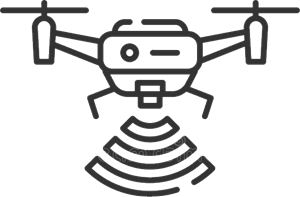
Kaizen and DMAIC: What's the differences?
Published on: August 20, 2022
Last updated: January 06, 2023 Read in fullscreen view
Last updated: January 06, 2023 Read in fullscreen view
- 27 Oct 2020
 8 principles of Agile Testing
8 principles of Agile Testing - 16 Jun 2022
 Rapid Application Development (RAD): Pros and Cons
Rapid Application Development (RAD): Pros and Cons - 09 Oct 2022
 Key Advantages and Disadvantages of Agile Methodology
Key Advantages and Disadvantages of Agile Methodology - 21 Jun 2021
 6 Useful Tips To Streamline Business Processes and Workflows
6 Useful Tips To Streamline Business Processes and Workflows - 21 May 2022
 "Fail Fast, Fail Often, Fail Forward" is the answer to Agile practices of software success
"Fail Fast, Fail Often, Fail Forward" is the answer to Agile practices of software success
Let’s look at the main characteristics of each approach:
Kaizen™ – a Japanese word that simply means ‘Change for the better’. The main characteristics are:
- Projects are well defined and baseline stats are collected before starting
- Dedicated resources are subject matter experts (SMEs) and focus on only the project
- The solutions should come from the SMEs as they will need to act as champions for the change
- Often follows the Demming/Shewhart cycle of Plan-Do-Check-Act
- Kaizen™ projects typically last 3 – 5 days
- Management MUST make resources available from support functions during the project. i.e., HR, Finance, Warehouse, Sales, Marketing
- Solutions are implemented based on 80% confidence instead of 95%
- Implementation is completed within the project timeline but if items fall outside, they are generally completed within 20 days
- Basic analysis is acceptable with indicative results enough to make decisions.
After the Kaizen event the following activities are recommended:
- Walkthroughs are conducted with the process area team
- Follow up with Future State process owner
- Updated Process Metrics, measure, and data
- To-Do list follow up
- The final measure of controlled metrics evaluated
- Training and SOP verification
DMAIC – a 5-step process where the 1st letter of each stage spells out DMAIC: Define, Measure, Analyze, Improve and Control. The main characteristics are:
- The existing process is not meeting customer requirements, but the reason why is not obvious
- Time is spent on analyzing the baseline data to understand current performance
- Baseline data is used to prove/validate the benefits once re-measured
- Solutions can come from anywhere and may not be popular with employees as they may mean significant changes
- Solutions require 95% confidence in being correct before implementation
- There can be a level of risk associated with the solution that will need to be accepted by the business before implementation
- Change is led by a Six Sigma Blackbelt or Greenbelt due to the nature of the data analysis.
[{"displaySettingInfo":"[{\"isFullLayout\":false,\"layoutWidthRatio\":\"\",\"isFaqLayout\":false,\"isIncludedCaption\":false,\"faqLayoutTheme\":\"1\",\"isSliderLayout\":false}]"},{"articleSourceInfo":"[{\"sourceName\":\"\",\"sourceValue\":\"\"}]"},{"privacyInfo":"[{\"isOutsideVietnam\":false}]"},{"tocInfo":"[{\"isEnabledTOC\":true,\"isAutoNumbering\":false,\"isShowKeyHeadingWithIcon\":false}]"}]
Via
{content}





















